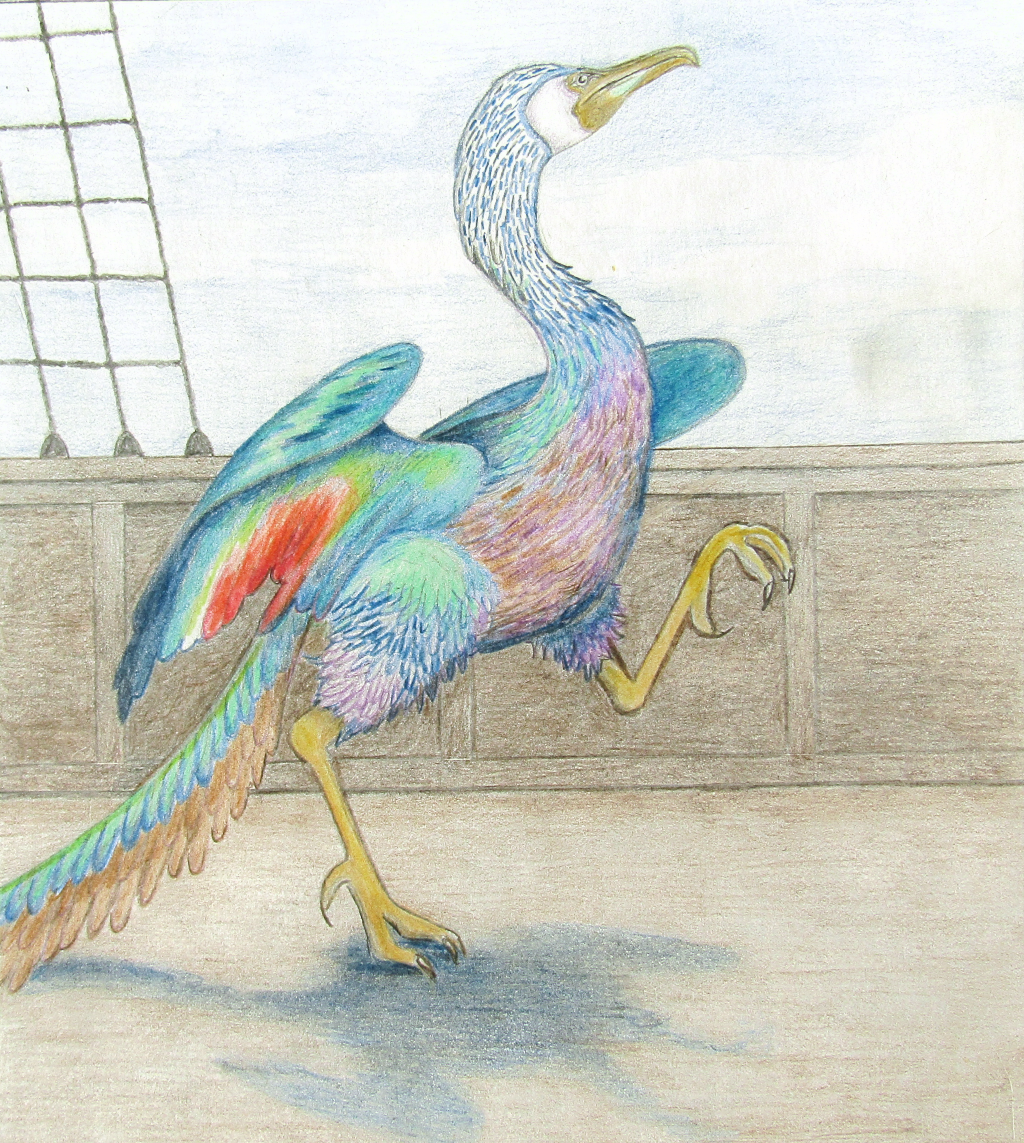Shipbird
The spray of salt air filled Corradine’s nostrils, the chill air a welcome refreshment after the stagnant heat of the tropical island. Some of the crew who’d indulged a bit too much were struggling with the bobbing of the ship, but for ‘dine the sea air always cleared her mind.
The Tarshans sure knew how to have fun, she had to give them that. That rum was more potent than any messino or mead. And the crabs — well, in addition to funding the mission, even the crew could afford to eat them when on Tarsha. Eat like a king on the island, sell them for a king’s ransom on the mainland. The ice would fetch a pretty penny, too.
She looked over to the starboard, where Jolissa was eyeing the block of ice they’d left out for her. Jolissa’s lizard-like neck stretched out as she attempted a cautious nibble, then nestled up against it only to jump back in surprise as she felt the cold. She hopped around it awkwardly, not sure what to make of it. She did this dance every time they left Tarsha, and it amused the crew every time.
Corradine cracked a smile and eyed the horizon. Everything looked clear. Jolissa’d been up in the air for the first hour out of Tarsha, with no hint of alarm. Should be smooth sailing. By tomorrow evening they’d be sailing into the Tusks, and the welcome familiarity of Kilpo Bay.
 An odd mix of the beautiful and the primitive, the shipbird has a lean, almost lizard-like body, wedged plumed tail, toothed beak, and radiant, multicolored plumage. Native to the Wander Islands far to the northeast, they’ve become an emblem of the Moru Kel shipping industry.
An odd mix of the beautiful and the primitive, the shipbird has a lean, almost lizard-like body, wedged plumed tail, toothed beak, and radiant, multicolored plumage. Native to the Wander Islands far to the northeast, they’ve become an emblem of the Moru Kel shipping industry.
Shipbirds are long-tailed seabirds with a body shape somewhat reminiscent of an elongated heron or cormorant. Their beak has small, ridged teeth. A prominent, elongated tail is one of their most distinguishing features. The shipbird’s plumage is a dazzling array of colors, similar in pattern to the irix of the Spice Islands. Shipbirds are colonial, nesting on the cliffsides of the Wander Islands.
Courtship is a multi-day process, with the males engaging in a characteristic “drunken” mating dance. Females approach after the males become tired; too early an approach risks an aggressive attack by the male. They are monogamous and generally produce clutches of 3–7 eggs, only one or two of which will survive to hatching. The mated pair cares for the young until it is able to fly, approximately three months later.
Shipbirds are carnivorous, eating fish, amphibians, small reptiles, crustaceans, and insects. They are strong fliers, able to coast for hours on high drafts.
Relationship with Humans
Shipbirds are notable for their ability to acclimate to human company. If raised around humans, they will readily accept them as an adopted colony. Their name comes from their popularity aboard ships, where sailors view them as good luck: a ship’s bird becomes its mascot.
Shipbirds are curious birds, naturally approaching any land they see. This is a boon to their vessels, as many an island has been discovered by a ship following the lead of its avian companion. They also have a surprising ability to detect approaching storms, and will sound the alarm with a low, rasping bray when a severe storm is approaching.
Once a shipbird has been taken from its colony, it will generally show no interest in returning — birds that are brought back can mate successfully, but those aboard vessels show little interest in mating. The males will still do their drunken dance in cycles, often leading sailors to attempt to serve them rum or ale rations.
Shipbirds are naturally docile around humans. Their bite can be painful if they are provoked, but they are generally non-threatening.
↞ Previous: Sentry Lizard Next: Wasps ↠